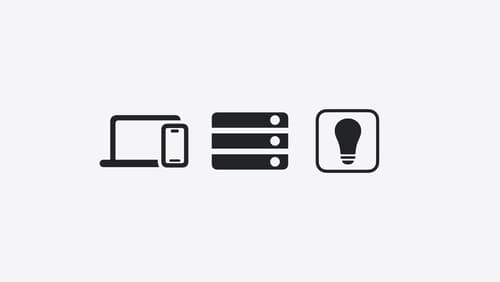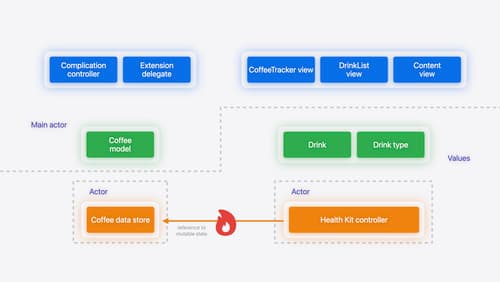how do I get started with swift concurrency
Asked on 2024-07-30
1 search
To get started with Swift concurrency, you can follow these steps based on the content presented at WWDC:
-
Understand the Basics: Begin by understanding the fundamental concepts of Swift concurrency, such as tasks, async/await, and actors. These are covered in the session A Swift Tour: Explore Swift’s features and design.
-
Enable Swift 6 Language Mode: Enabling Swift 6 language mode in your project is a crucial step. This mode helps protect against possible race conditions and ensures data isolation. You can see a practical example of enabling Swift 6 in the session Migrate your app to Swift 6.
-
Adopt Concurrency Features: Start adopting concurrency features in your app. This involves using async/await for asynchronous operations and actors for managing state in a concurrent environment. The session Migrate your app to Swift 6 provides detailed guidance on this.
-
Enable Complete Checking: Enable strict concurrency checking in your project's build settings. This will help catch concurrency issues at compile time. You can see how to do this in the session Migrate your app to Swift 6.
-
Handle Delegate Callbacks: Pay attention to how delegate callbacks are handled in a concurrent environment. Ensure that callbacks are executed on the appropriate thread, often the main thread for UI updates. This is discussed in the session Migrate your app to Swift 6.
-
Gradual Migration: If you are migrating an existing app, do it gradually. Start with simpler parts of your app, like the UI layer, and then move to more complex parts. This strategy is explained in the session Migrate your app to Swift 6.
By following these steps, you can effectively get started with Swift concurrency and ensure your app is safe from data races and concurrency issues.

A Swift Tour: Explore Swift’s features and design
Learn the essential features and design philosophy of the Swift programming language. We’ll explore how to model data, handle errors, use protocols, write concurrent code, and more while building up a Swift package that has a library, an HTTP server, and a command line client. Whether you’re just beginning your Swift journey or have been with us from the start, this talk will help you get the most out of the language.

Migrate your app to Swift 6
Experience Swift 6 migration in action as we update an existing sample app. Learn how to migrate incrementally, module by module, and how the compiler helps you identify code that’s at risk of data races. Discover different techniques for ensuring clear isolation boundaries and eliminating concurrent access to shared mutable state.
